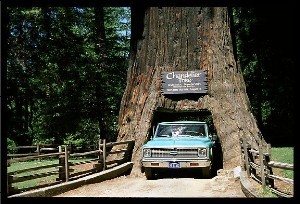30 years ago, there were no huge homeless encampments in Berkeley, Oakland, or San Francisco. Now, thousands of people live in them, and they are getting bigger all the time. A lot of people are baffled by this, but the explanation seems obvious to me. The number of extremely poor people in the U.S. has exploded over the past 30 years. The real inflation-adjusted income of the average American has been declining since the 1970s. The minimum wage adjusted for inflation has fallen by over 25% since 1970. For reasons that I don’t understand, very few people make a mental connection between the declining income of poor and middle class Americans and the rise in homelessness.
In 1960, the largest private employer in the United States was General Motors. The average non-managerial employee at GM made $25.00 an hour, adjusted for inflation. Like most unionized industrial workers of the time, GM employees also got a generous fringe benefits package.
Today, in 2017, the largest private employer in the United States is Walmart. The average non-managerial employee at Walmart makes $9.15 an hour, and with relatively few fringe benefits.
When I see people working at Starbucks and Walgreens here in Berkeley, I sometimes wonder: “Where do these people live?” These people make $11 to $14 an hour, and a 1 bedroom apartment in Berkeley costs $2,000 to $3,000 a month. So where do these people live? In a city where the average 1 bedroom apartment costs over $2,000 a month, where can a person who makes $13 an hour live besides a tent, a friend’s garage, or the back seat of a car? What I can’t understand is why so few politicians and TV commentators see any connection at all between rising poverty and rising homelessness. The connection seems very obvious to me. What am I missing?
$70 TO GET INTO YOSEMITE NATIONAL PARK?
Here’s an example of how the lives of poor people are becoming even poorer in America. Our national parks were intended to be places that anyone could go to. The poor as well as the rich could visit a national park. Things were different in Europe, where the most beautiful places and scenic vistas were made royal estates, available only to aristocrats and their friends. Last week, Interior Secretary Ryan Zinke announced that the price of admission to Yosemite, Grand Canyon, Glacier, Yellowstone, and many other national parks will be going up from $25 now to $70 next year. This story didn’t get a lot of publicity, but I think it should have. For a lot of people, $70 is a lot of money. $70 is more than a whole day’s take-home pay for somebody working at minimum wage. Obviously, far fewer poor people will be able to go to a national park once it costs $70 to get in. I think that’s sad. Don’t you?

